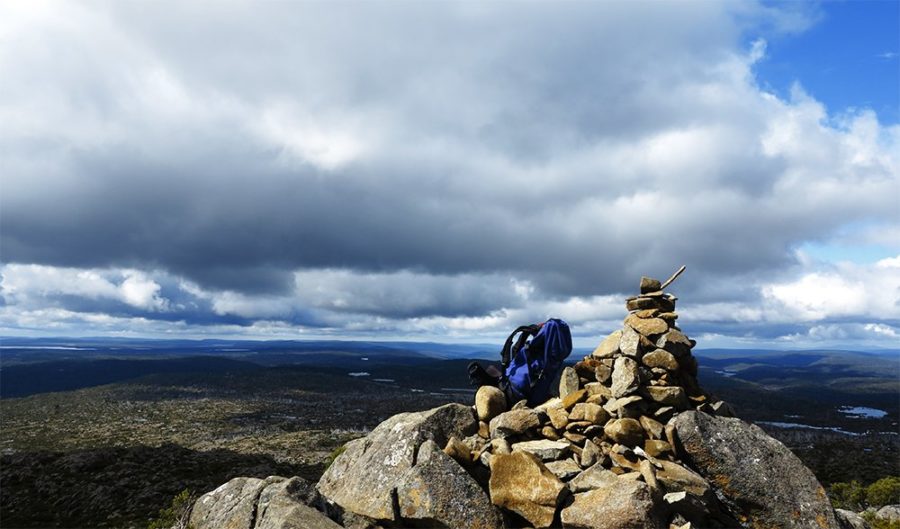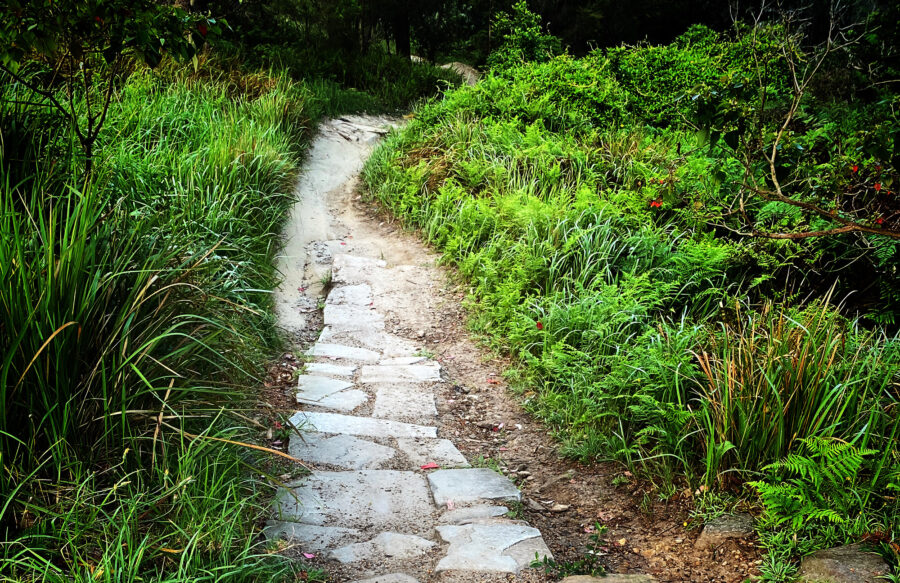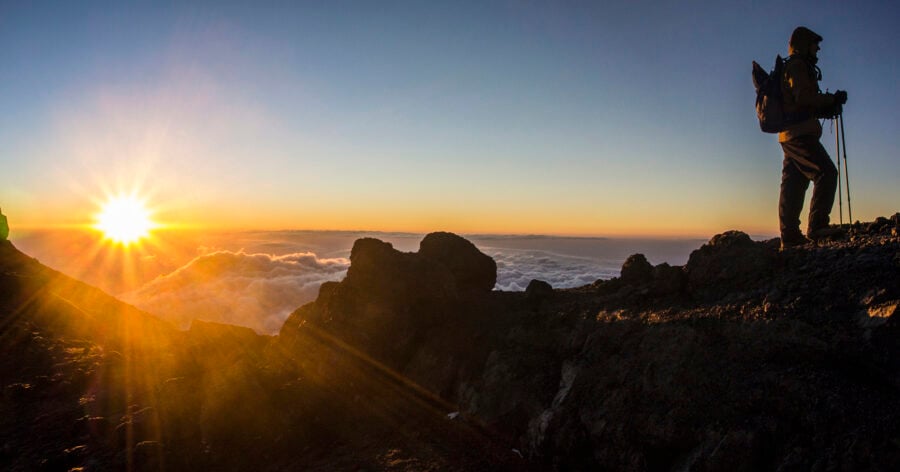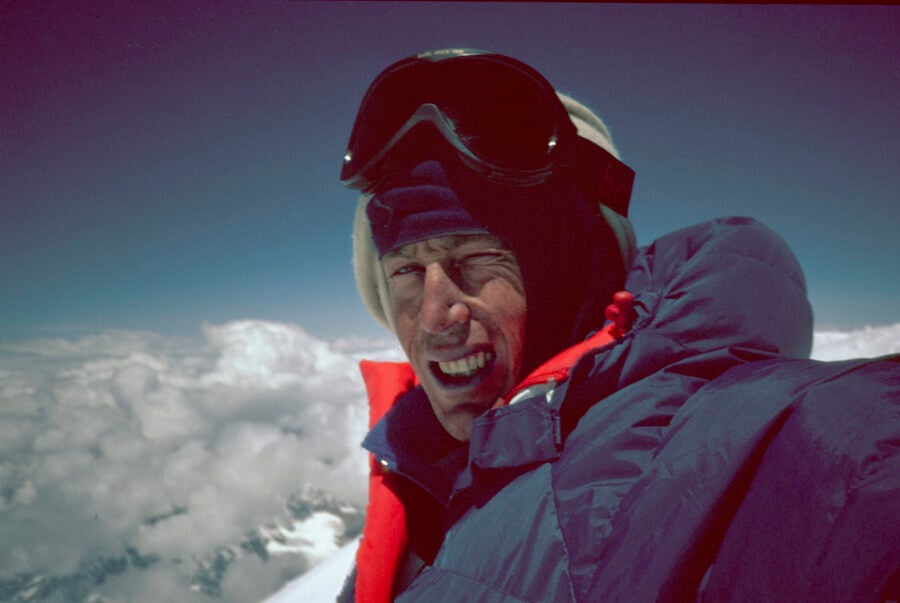Walking the Walls of Jerusalem NP

THERE’S SOMETHING satisfying about doing things just that little bit differently.
It gives you a smug, secretive feeling that you’ve accomplished a task in your own special – perhaps cheeky – way. I guess that helps explain the sense of satisfaction that seems to emanate from me – and the faces of my fellow hikers – deep in Tasmania’s Walls of Jerusalem National Park.
Never before has the end of any adventure I’ve undertaken been its highlight but, standing here with the immense grandeur of the sheer cliffs surrounding our group, six days in ‘‘The Walls’’ have proved the theory that, sometimes, on those rather special occasions, it does pay to do it upside down…
Walls of Jerusalem World Heritage
Walls of Jerusalem NP is one of the world’s most overqualified World Heritage sites and forms part of the Tasmania Wilderness World Heritage area.
This area encompasses 1.38 million hectares and includes Cradle Mountain-Lake St Clair, Franklin-Gordon, Southwest and Hartz Mountain national parks, as well as Adamsfield Conservation Area and the Central Plateau Conservation and Protected Area. In short, for such a small island, the World Heritage-listed area is huge.
The park’s title is thanks to 19th-century surveyor James Scott.
In the 1920s, Launceston solicitor Reg Hall, a regular visitor, continued the biblical theme when naming natural features, so landmarks are tagged with titles such as Zions Gate, Herods Gate, Wailing Wall, Pool of Bethesda and The Temple.
The Walls of Jerusalem Circuit is one of Tasmanian Expeditions’ most popular trips.
The promise it holds is six days in a land that time hasn’t forgotten, it has just left it as is because, really, there ain’t much need for improvement.
Not that we’d know it, as we pile out of the Tas Ex bus on a sweltering February mid-afternoon. Tasmania’s reputation as a cool, mild climate has been burnt away by the crushing heatwave we’re immersed in.
Starting a big trek in the middle of a hot day doesn’t sound like ideal planning, but as the trek progresses, it proves a masterstroke.
For now, though, as we mutter under our sun hats and glance up at the impending steep 500m climb up a scrubby hill, the words from Simon and Darren, our guides, that “we’re doing this one in reverse” only seem to confirm our doubts.
Picture perfect camping at Walls of Jerusalem
As we scurry into the shade at the base of the climb, we all try and get as close to Simon as possible to hear his explanation for this lunacy.
And it is pretty simple: Tas Ex is contemplating running the Circuit in reverse – from south to north – for future trips. The 10 of us – John and Helen, Donald, Ben, Sue, Amanda, Alan and Paula, Graham, and me – have inadvertently become guinea pigs to be put through the reverse circuit and see what we (and, of course, the guides) think about finishing at what will be the literal and physical highpoint of the Walls themselves.
At this point, deep in the still, stifling heat, trying to seem happy about this isn’t the easiest task. It takes Simon’s promise of cooler conditions later in the week to get us moving upwards.
For every endeavour, there should be a reward. The afternoon is spent scrambling upwards, then, in the nick of time to halt any thoughts of a stop-trek meeting, a welcome flattening-out of terrain leads us to the first campsite, right beside Lake Bill. The term “picturesque” is an understatement – the lake’s beauty complemented by rugged dolerite peaks towering over it. Once the tents are up, it is swim time in the lake’s cool, clean, tannin-stained waters.
The water in these high lakes possesses that smooth, refreshing feel and the climb up that hideous hill is soon washed from our minds. Of course, being placated by gourmet-quality camp food dished up by Simon and Darren also contributes to a feel-good atmosphere on the first night. We even dredge up a laugh or two about the climb up here; it already feels a world away.
This type of campsite – idyllically situated beside a breathtaking lake – really fits Tasmania’s picture-perfect image. For our group, looking forward to each new lakeside camp is a highlight. And getting to each one is not exactly boring either.
On our second day, we traverse easier terrain as we make our way across the lushly vegetated plateau, before a steep descent to the Junction Lake track and Meston Hut. The landscape is a mix of all the best Tasmania has to offer – rocky outcrops, dense bush, rich green grasses and, yep, loads of lake and mountain views. The descent is via a narrow track that tests our pack-carrying balance but no one is rushing.
There’s too much to see to want to fly past – even an encounter with a bunch of marauding leeches at our lunch stop doesn’t deter us from enjoying what is one of our longest days. The tranquil campsite at Junction Lake is only topped as the afternoon’s highlight by a swim in a nearby waterfall.
The full Tasmanian experience
We retrace our steps the next morning, following Junction Lake Track back to Meston Hut where we offload gear from our packs in preparation for the ascent to the summit of Mt Ragoona (1350m), via a side track near the hut.
The climb up is slightly challenging but awesome fun as we negotiate tracks that wind through scrubby, then progressively rockier, terrain on our way to the Mt Ragoona Plateau, which is covered in rocks and boulders, dotted with beautiful, clear mountain tarns – a fantastic final hour before we reach the summit.
The view from up here is brilliant – it is the full 360-degree experience, in which Cradle Mountain and its surrounding peaks are included. Even though up high we are copping the full brunt of the cool wind, none of us is keen to leave this viewpoint; the effort to get here was too much to waste on a quick glimpse.
As with everything on this trek so far, we are given loads of time to enjoy that feeling of being somewhere fully remote and totally wild; there is no rush from our guides.
It is the full Tasmanian experience, something that, as I sit up here looking out over the vast wilderness below, I realise is sadly disappearing from other parts of our country. This reflective mood doesn’t affect our group, however, we’re all invigorated after the climb.
Wild Dog Creek
As we’ve traversed the park, Simon and Darren have filled us in, at various points, on the reasons the park was such a shoe-in for World Heritage status and we finally get to see one of the most obvious examples the morning we leave Lake Meston.
Just behind the campsite we follow the track down into the start of what is claimed to be one of the world’s best examples of a glacial valley. The valley is nearly perfectly sculpted with the mountains and hills that constitute its sides near-uniform in shape and appearance. Taking the first few steps into the valley feels like stepping into an ageless landscape, which of course it is.
The odd fallen-down boulder marks our path as we traverse the Adelaide Plain before starting the long section of undulating track that runs beside Lake Adelaide’s eastern shore. After a quick lunch stop, we do some true off-track walking, albeit only for a short distance, before arriving at Wild Dog Creek, the base for Tas Ex’s permanent camp, and our site for the next two nights.
Tas Ex’s permanent camp comprises tent platforms (raised off the ground to minimise the impact on the fragile environment) and a kitchen area, which Simon and Darren soon convert into a unique open-air cafe. We are sitting back munching snacks and drinking coffee and tea when we get another pleasant surprise.
Wes Moule, who pack-hauls food and supplies for Tas Ex, is also at Wild Dog Creek, guiding a charity trekking group and is in his usual high spirits, keen to hear of our exploits.
The West Walls Traverse
Our first morning at Wild Dog Creek is an early one as we have a big day ahead. By now, we are like putty in Simon and Darren’s hands as they have delivered more than we hoped for on this adventure, so are open to any suggestion they put forward. Their plan is epic but, if we pull it off, it will cap a brilliant week in the wild.
We’re heading for Mt Jerusalem first, which we plan on summiting, before returning the same way, but with two options. For those keen enough, Simon suggests a traverse of the West Wall; for those after a more leisurely immersion in the Walls’ arena, there is a lower side track through the valley on the way back to camp. Needless to say, me, Amanda, Ben and Donald are caught up in the excitement and volunteer ourselves for the West Walls traverse…
Mt Jerusalem itself is a fantastic adventure. We cross the Walls valley, trekking beside pencil-pine forests and bright-green cushion plants, beneath the immense dolerite cliffs that comprise the West Wall.
A quick food break at an old hut is the only stop on our way to the start of the climb. The track has a nice, relatively steady gradient, and the summit itself is a visual extravaganza. What looks like hundreds of lakes, big and small, are spattered around the land below us, as well as some of Tasmania’s immense rivers, such as the Mersey.
In itself, this climb is a great achievement and a fitting finale, but for us it is just the halfway point. The traverse beckons and, crazily or not, the original volunteers are still keen.
Rock scrambling is a favourite activity of mine. I don’t know whether it is masochistic or the fact I know that, at the end of all that effort, there is generally a reward. And in the case of the West Wall traverse, it is a huge one.
Our small group has scrambled up between a massive, steep split in the southern section of the West Wall, before rock-hopping over boulders towards the top of the Wall, where we spot the rest of our group, brightly clad, way down below.
The feeling of being up this high, and quite exposed, is awesome and a great excuse to break out some celebratory chocolate.
Wild end to the Walls of Jerusalem walk
I am sure Tasmania doesn’t like letting people go – at least not without a reminder of how untamed Australia’s southernmost state still is. On my previous Tas adventure – the South Coast Track – it was the same.
The state is famous for its wild weather – a fact that lurks in your mind even when you’ve experienced a week of near blue-bird skies – and that weather always makes an appearance.
For us campers at Wild Dog Creek, it starts just after midnight. We’d had an early night and, for that, at least, I am glad, as we all probably snuck in a few hours’ kip before the screaming winds hit us. It is now that I realise I really should have packed my next-warmer sleeping bag – and perhaps a four-season tent – as we are buffeted throughout the early hours of the morning by the cold, strong gale.
It is wild and, really, it is Tasmania, so you wouldn’t want it any other way. Still, I have had more enjoyable experiences than early wake-ups when the wind-chill factor must have brought the temperature below freezing.
It does provide us with reserves of energy we probably believed we’d left on the Walls traverse – I have never packed up my gear so quickly. Or burnt my tongue quite so badly trying to guzzle piping-hot coffee in a futile effort to get warm…
The crazy weather dies down progressively as we leave this wild land, as if in farewell. Our final few hours in the Walls of Jerusalem NP are still exciting – we follow the winding track through thick bush and trek beside the beautiful Solomons Jewels (a series of small tarns), confirming to the entire group that undertaking the Circuit in reverse really does provide the optimum Walls experience.
The final leg is a steep descent through a densely treed forest, then we reach our pick-up point and, later, as we make our way back to Launceston, confronting a jarring dose of reality.
Suddenly, there are vehicles around, emails to answer, cafes to stop at (oddly, the coffee doesn’t taste anywhere near as nice as that experienced over the past six days). It seems like our six days in the Walls of Jerusalem was a sublime half reality, half dream. Lucky for me, I have always believed dreams come true.
The essentials
Getting there: Jetstar flies daily to Launceston from Sydney, Melbourne and other capitals. See jetstar.com.au for more information.
When to go: The best time to trek in Tassie is from October until March/April. It is Tasmania, however, so expect all types of weather conditions.
Cost: Tasmanian Expeditions’ 6-day Walls of Jerusalem Circuit costs $1545.
Also available: 4 days Walls of Jerusalem Experience $1095 or Winter Experience $1095. For more info see www.tasmanianexpeditions.com.au or call
1300 666 856
Essential gear: Sun protection, a comfortable pack, broken-in boots, gaiters, shorts/pants, trekking poles and at least 3L water carrying capacity.
Warm base layers, mid layers and robust outer shell are also a must. It is also worth packing extra toiletries.




